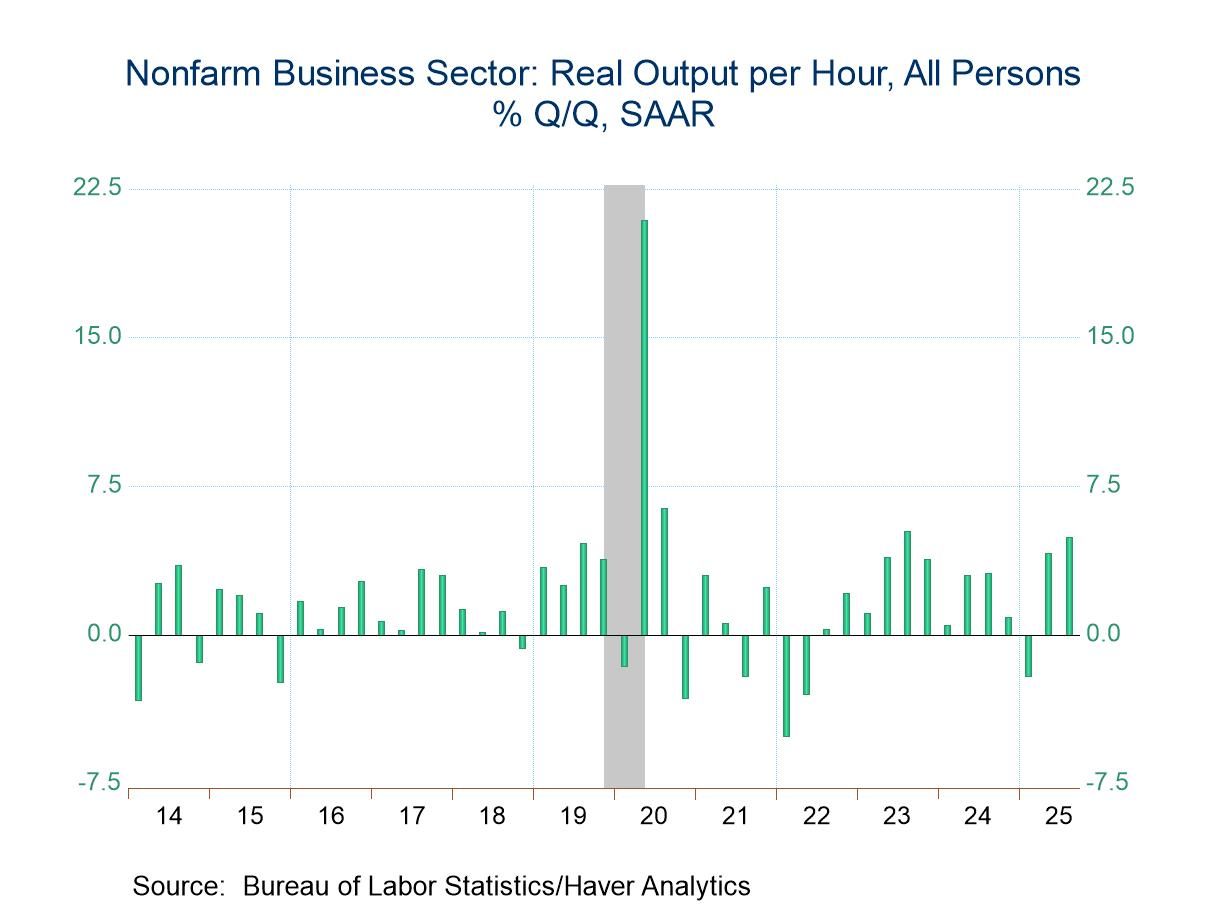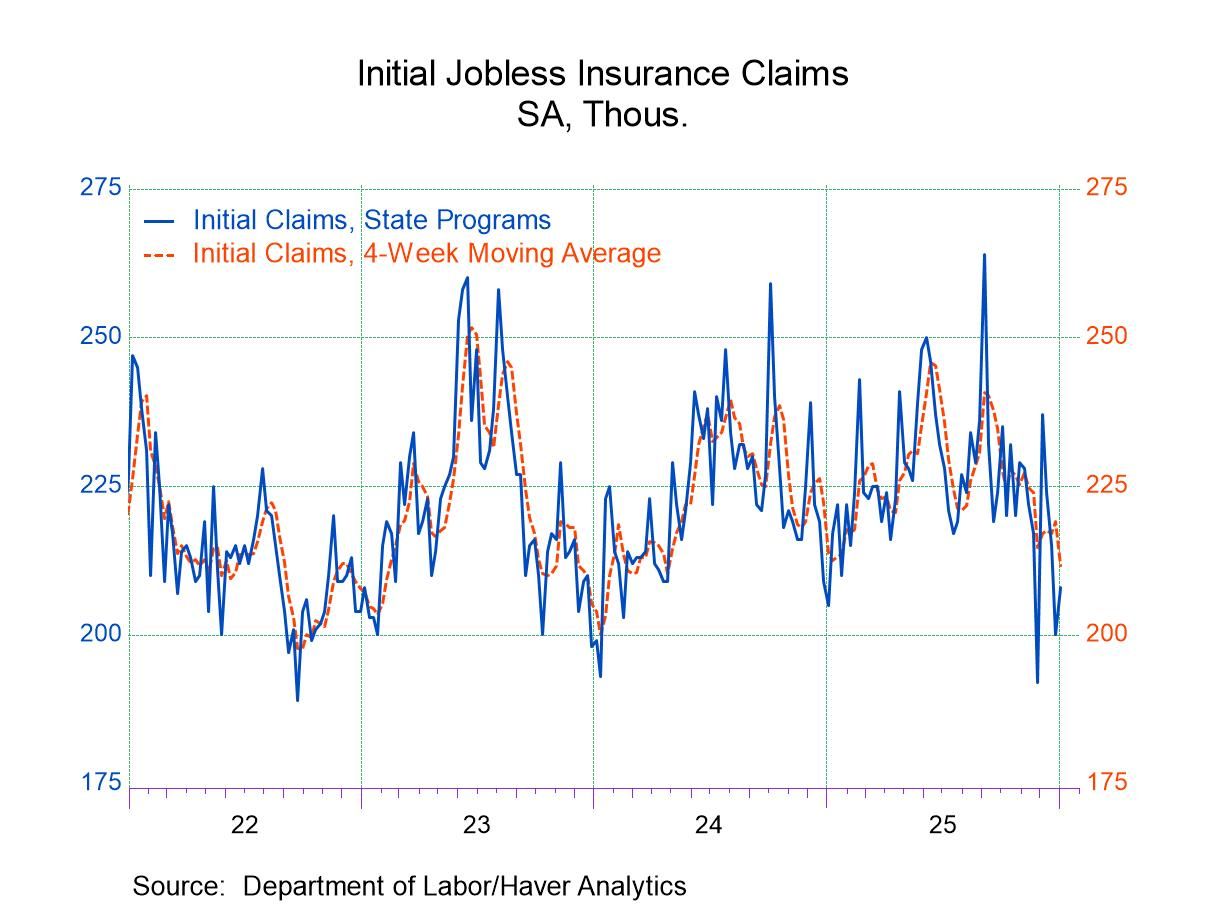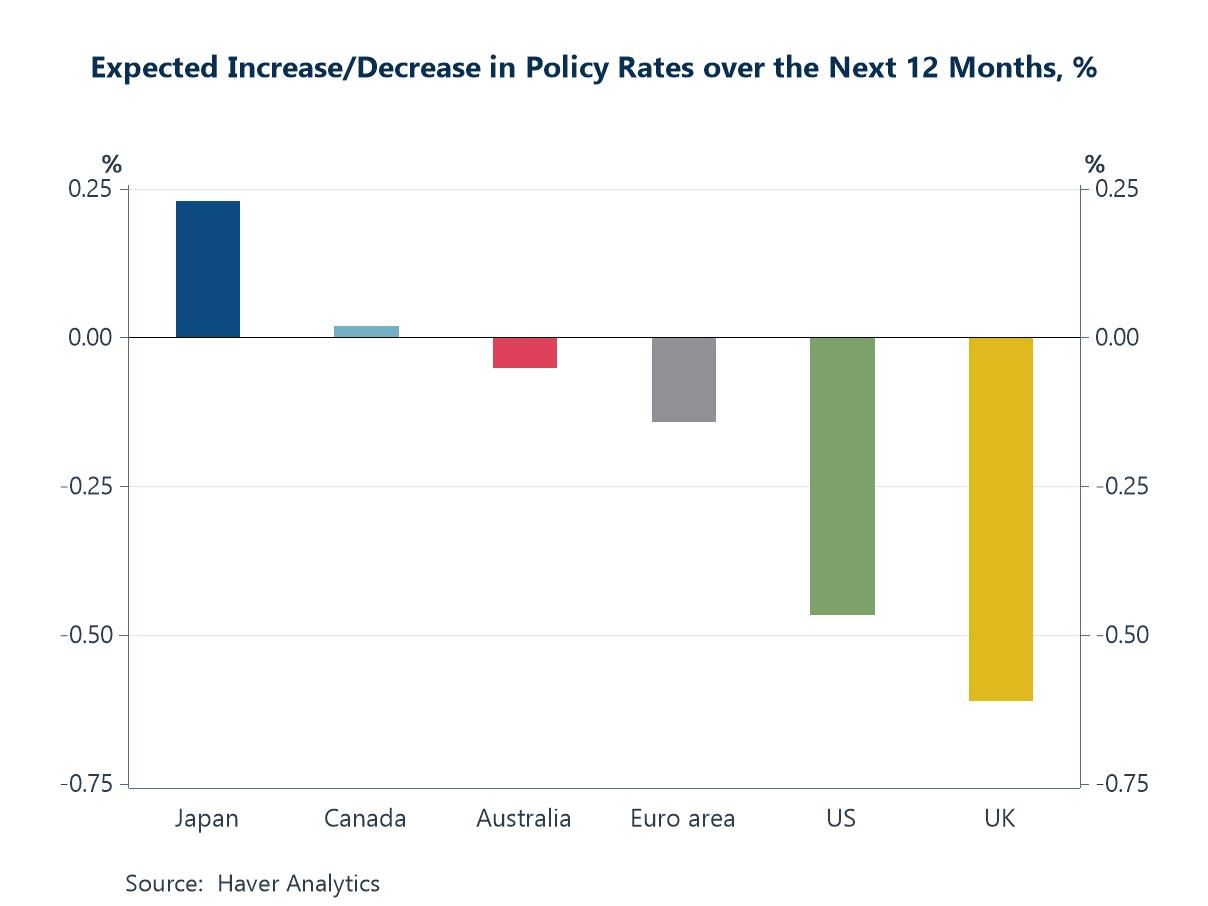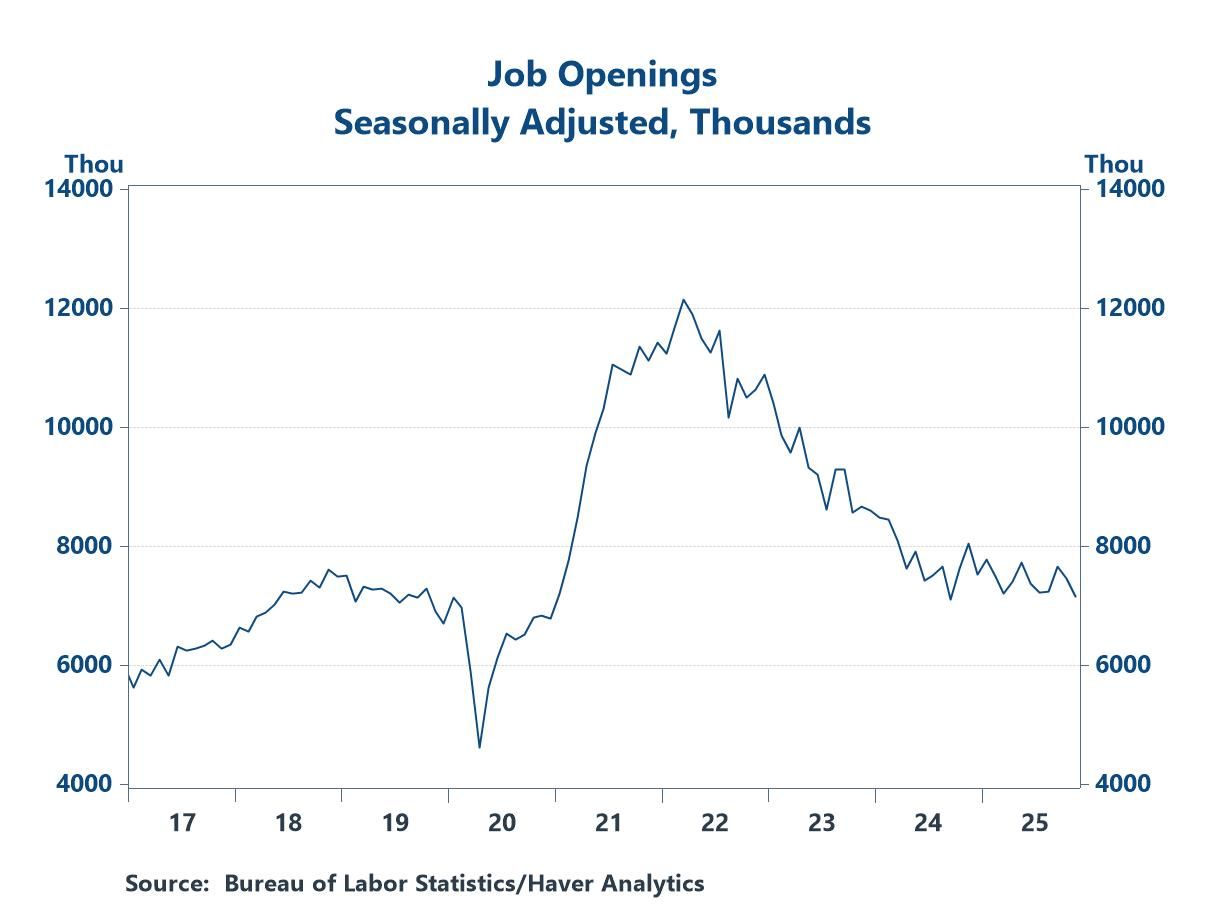Initial Unemployment Claims Fall 20,000
Summary
- Initial claims dip back below 200,000.
- Insured unemployment rate holds at 1.2%, maintaining historically low range.
- Highest state rates at 2.6%, lowest at 0.3%-0.4%.


Initial unemployment insurance claims declined to 192,000 (8.5% y/y) during the week ended March 11 from 212,000 in the prior week, which was revised from 211,000. Expectations in the Action Economics Forecast Survey for the March 11 week had been for 205,000. The four-week moving average of initial claims was 196,500 in the March 11 week, just barely below the prior week’s 197,250.
In the week ended March 4, the number of continuing weeks claimed for unemployment insurance declined 29,000 to 1.684 million (5.6% y/y) from 1.713 million in the prior week. The four-week moving average of continuing claims was 1.676 million, down slightly from 1.678 million in the four weeks ended February 25.
The insured rate of unemployment was unchanged at 1.2% after two weeks at 1.1%. This rate has hovered between 1.1% and 1.2% since mid-November, which is just above the record low range of 0.9%-to-1.0% in place from April through October of last year.
In the week ended February 25, the total number of continued weeks claimed in all unemployment insurance programs rose 4.1% (+1.6% y/y) to 2.000 million from 1.921 million in the prior week. This total includes federal employees, newly discharged veterans, extended benefits and other specialized programs and is not seasonally adjusted. Claims in the Pandemic Unemployment Assistance program and Pandemic Emergency Unemployment Compensation are no longer included in the main Labor Department press release, as both programs have expired.
The insured rates of unemployment in regular programs vary across states. The highest insured unemployment rates in the week ending February 18 were in New Jersey (2.65%), Rhode Island (2.54%), Massachusetts (2.34%), Minnesota (2.27%) and California (2.13%). The lowest rates were in Alabama (0.28%), Virginia (0.32%), Florida (0.40%), Kansas (0.42%) and North Carolina (0.43%). Other major state rates include Illinois (1.99%), New York (1.91%, Pennsylvania (1.76%) and Texas (0.95%). These state rates are not seasonally adjusted.
Data on weekly unemployment claims going back to 1967 are contained in Haver's WEEKLY database, and they are summarized monthly in USECON. Data for individual states are in REGIONW. The expectations figure is from the Action Economics Forecast Survey, carried in the AS1REPNA database.


Carol Stone, CBE
AuthorMore in Author Profile »Carol Stone, CBE came to Haver Analytics in 2003 following more than 35 years as a financial market economist at major Wall Street financial institutions, most especially Merrill Lynch and Nomura Securities. She had broad experience in analysis and forecasting of flow-of-funds accounts, the federal budget and Federal Reserve operations. At Nomura Securities, among other duties, she developed various indicator forecasting tools and edited a daily global publication produced in London and New York for readers in Tokyo. At Haver Analytics, Carol was a member of the Research Department, aiding database managers with research and documentation efforts, as well as posting commentary on select economic reports. In addition, she conducted Ways-of-the-World, a blog on economic issues for an Episcopal-Church-affiliated website, The Geranium Farm. During her career, Carol served as an officer of the Money Marketeers and the Downtown Economists Club. She had a PhD from NYU's Stern School of Business. She lived in Brooklyn, New York, and had a weekend home on Long Island.





 Global
Global